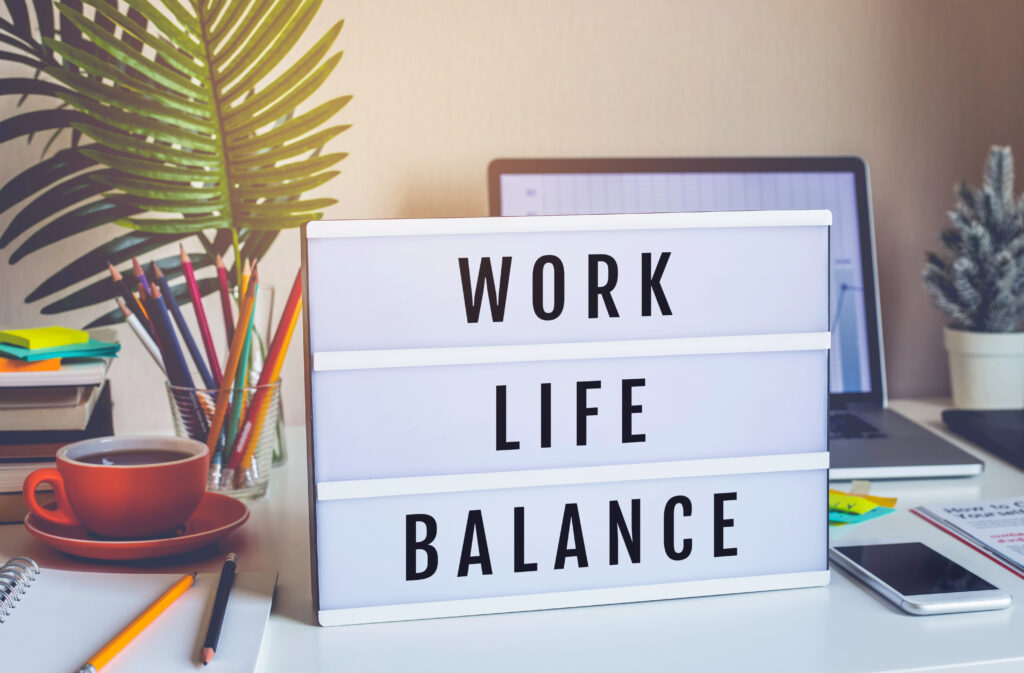If you feel stressed or overwhelmed on a daily basis, the idea of achieving work-life balance may seem attractive, but also a little bit confusing.
Like, what is work-life balance exactly?
In this blog post, we’ll explore what work-life balance is and 7 key aspects of it.
What is work-life balance?
Work-life balance means something different to everyone based on their values. But if we had to define it, work-life balance refers to the concept of achieving a harmonious equilibrium between one’s professional life and personal life.
It involves effectively managing and allocating time, energy, and attention to fulfill both work and personal commitments, while also maintaining physical and mental well-being.
Achieving work-life balance is all about prioritizing your business or work-related activities and your personal activities in a way that feels good to you.
Here are 7 key aspects of work-life balance
Key Aspect #1: Time Allocation
Striking a balance involves allocating appropriate time to work-related tasks and responsibilities, as well as personal activities and relationships. This includes setting boundaries and avoiding excessive work hours or constant availability.
Key Aspect #2: Boundaries and Separation
Establishing clear boundaries between work and personal life is vital. It involves creating physical and mental separation by defining specific work hours, avoiding work-related activities during personal time, and avoiding distractions from personal matters while at work.
Key Aspect #3: Prioritization and Goal Setting
Identifying priorities, setting realistic goals, and managing commitments is crucial for work-life balance. This requires assessing the importance and urgency of tasks, delegating when possible, and focusing on activities that align with personal values and well-being.
Key Aspect #4: Flexibility and Adaptability
Embracing flexibility allows individuals to respond to the evolving demands of work and personal life. This includes having the flexibility to adjust schedules, make necessary changes, and accommodate unforeseen circumstances.
Key Aspect #5: Self-Care and Well-being
Prioritizing self-care is an essential component of work-life balance. Taking care of physical health, engaging in activities that promote mental well-being (such as hobbies, exercise, and relaxation), and nurturing relationships contribute to overall life satisfaction and productivity.
Key Aspect #6: Support Systems
Building and utilizing support systems can help maintain work-life balance. This may involve seeking support from colleagues, family members, or friends to share responsibilities, seeking assistance with childcare or household tasks, or engaging in professional networks for guidance and advice.
Key Aspect #7: Mindfulness and Present Moment Awareness
Practicing mindfulness and being present in the current moment can help individuals focus on the task at hand, reduce stress, and improve overall satisfaction with work and personal life. Mindfulness techniques, such as meditation or deep breathing exercises, can support work-life balance.
Summary
Work-life balance is a subjective and individualized concept, as each person’s circumstances and values are different.
It is a continuous process that requires regular self-assessment, adjustment, and flexibility to ensure personal well-being, satisfaction, and success in both work and personal domains. I recommend assessing every 3-4 months.
You can do this.


